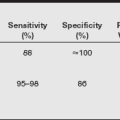
In the busy world of healthcare, ensuring patient safety is paramount. One critical aspect of this is the proper administration of medication.
You’ve likely heard of the “5 Rights” for giving medication. But, there’s an equally important “6th Right” that’s often overlooked. Properly recording medication administration ensures accuracy in patient care and avoids potential harm.
Read on to learn how to record the 6th right of medication administration.
Be Thorough and Accurate
Documentation is a crucial part of the medication administration process. It serves as a permanent record of what medications were given, when they were given, and by whom.
This information is vital for patient care continuity. It helps prevent medication errors and miscommunications between healthcare providers.
Therefore, it’s essential to be thorough and accurate when documenting medication administration. The 6th right of drug administration is “right documentation, right time, and right way.”
Be Timely
Documentation should be thorough and accurate. It should also be done on time. This means recording medication administration as soon as possible after it occurs.
Delaying the 6th right of medication administration causes confusion and errors. This is especially true if multiple medications were given at different times. The patient safety guidelines recommend documenting within 30 minutes of medication administration.
Be Clear and Legible
Bad handwriting and incomplete documentation can cause medication errors. They can also cause treatment delays and harm to patients. So, it’s crucial to ensure all entries are clear. They should be easy to read.
Using medical terms and abbreviations can help. They can prevent misunderstandings and errors in patient care.
You should also avoid slang and little-known abbreviations. This should be a priority when documenting giving medicine. The healthcare safety protocols recommend using standard medical abbreviations.
Ensure Confidentiality
Patient privacy and confidentiality should always be a top priority in healthcare settings. This also applies to medication administration documentation.
Only authorized staff should access medication records. They must always follow confidentiality rules.
Be sure to see medication attorneys for more information. They know the legal risks of medication documentation.
They know how to keep patient data private. They can help provide guidance on how to protect patient information.
Double-Check Before You Document
Before you finish your medication documentation, double-check all entries. Check for accuracy and completeness. This means reviewing the patient’s name. It includes their dosage, time of administration, and other important details.
A quick review can find mistakes or omissions. It can do this before the record becomes part of the patient’s file.
Common Documentation Pitfalls
Healthcare providers should be aware of common pitfalls. These include documentation omissions, incorrect entries, and failing to update records in real-time.
Dealing with these issues is critical. They are key to keeping high patient care and safety standards. Healthcare providers should be trained on proper documentation. They should also be regularly monitored for compliance.
Be Consistent
Consistent documentation is vital. It must be the same across shifts and among providers. This helps reduce confusion. It prevents discrepancies from inconsistent recording.
You can use standardized forms and templates. They ensure consistency and accuracy in documenting medication administration.
These resources can also help find errors. They can find discrepancies. This leads to better patient safety.
Learning How to Record 6th Right of Medication Administration
Proper 6th right of medication administration is essential. It ensures patient safety and care continuity. By following these guidelines and avoiding mistakes, healthcare providers can make healthcare safer.
It will also make it more efficient for all patients. So, let’s keep putting proper medication documentation first. It’s for the well-being of our patients.
Visit our website for more like this.




